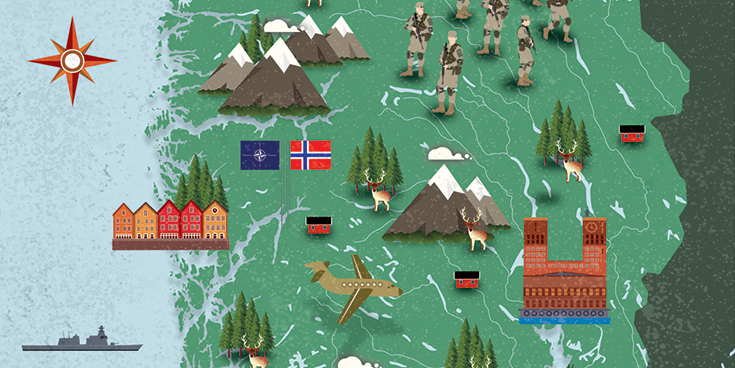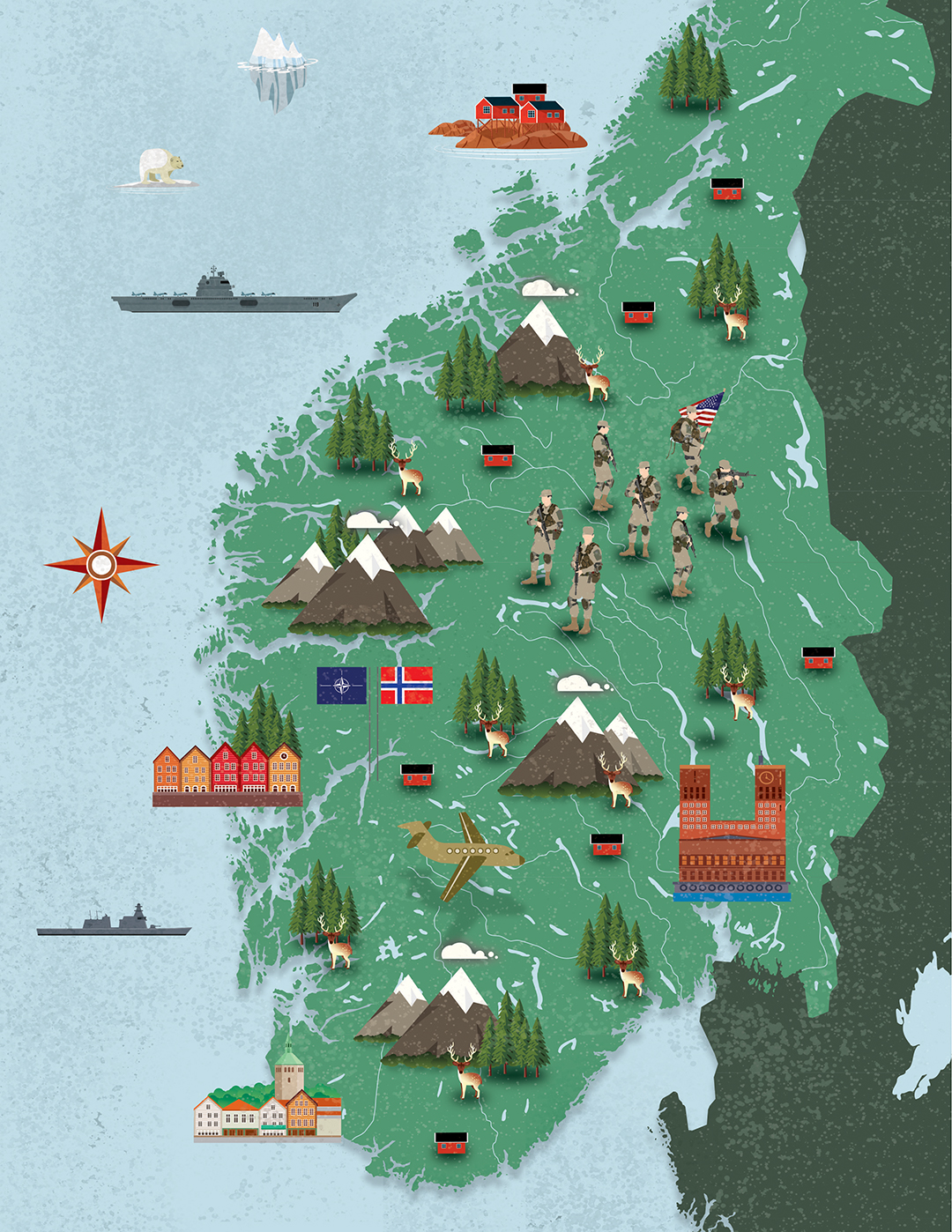Deployment to Norway fortifies NATO alliance
THE WATCH Staff
When more than 300 U.S. Marines arrived on the snowy slopes of central Norway in January 2017, it marked the first time since NATO was founded in 1949 that foreign troops have been stationed in the Arctic country.
The North Atlantic Treaty Organization (NATO) allies announced that cold-weather training was their priority, although Norway’s decision to invite U.S. troops to stay for up to a year on a rotational basis comes while many Nordic countries are fortifying homeland defenses because of Russia’s actions near their borders.
Norway joined NATO in 1949 on the condition that no foreign combat troops be permanently stationed on its territory during peacetime. The reversal is an “intentional policy change and one that follows the Norwegian government’s request for the strengthening of NATO’s military presence in the High North,” Henrik Urdal, director of the Peace Research Institute Oslo, told The Watch. “It is a response to the changing European security climate and specifically to increased Russian military presence in a region that is a top Norwegian foreign policy priority.”
 “The U.S. initiative to augment their training and exercises in Norway by locating a Marine Corps Rotational Force in Norway is highly welcome and will have positive implication for our already strong bilateral relationship.”
“The U.S. initiative to augment their training and exercises in Norway by locating a Marine Corps Rotational Force in Norway is highly welcome and will have positive implication for our already strong bilateral relationship.”
Ine Eriksen Søreide, then Norwegian minister of defence
Norwegian officials said the deployment demonstrates a strengthening of the NATO partnership. “The U.S. initiative to augment their training and exercises in Norway by locating a Marine Corps Rotational Force in Norway is highly welcome and will have positive implication for our already strong bilateral relationship,” then-Norwegian Minister of Defence Ine Eriksen Søreide said in a prepared statement.
Søreide has been rallying NATO members and Norway’s neighbors to bolster their homeland defenses since Russia’s annexation of Crimea and its military interference in eastern Ukraine in 2014. “Norway is NATO in the North, and we share a border with an increasingly assertive neighbor with superpower aspirations,” Søreide told a security conference in Oslo, Norway, in February 2017. Russia has “modernized its Armed Forces, significantly increased its military presence in the High North, reintroduced the old East versus West schismatic thinking, engaged in subversive actions against Western democracies, violated international law and undermined European stability,” she added.
Russia’s military activities in the region extend beyond Crimea and Ukraine.
Over the previous two years, NATO commanders reported seeing more Russian submarines in the North Atlantic than they have seen since the end of the Cold War. NATO also recorded a sharp increase in Quick Reaction Alert scrambles to encounter Russian military planes in the Baltic and Black Sea regions. NATO’s European forces scrambled aircraft 480 times in 2014, and 400 of those involved Russian military aircraft. In 2016, that number soared to 807, and the majority — 780 — were responses to Russian military aircraft, a Jane’s 360 report noted.
While the U.S. presence in Norway is small, it sends a symbolic message about NATO determination, Urdal said. “The security guarantee provided by NATO and the U.S. forms the cornerstone of the Norwegian security policy,” Urdal said. “While the deployment of 300-plus U.S. Marines has little impact on Norway’s military capabilities, it signals resolve on the part of the alliance to uphold a strong presence in the region.”
Norway’s neighbors are also showing increased resolve.
Finland announced in February 2017 that it will increase annual defense spending by U.S. $178 million and boost troop totals by about 20 percent to 280,000. It also stepped up military cooperation with neighboring Sweden following Russia’s annexation of Crimea in 2014.
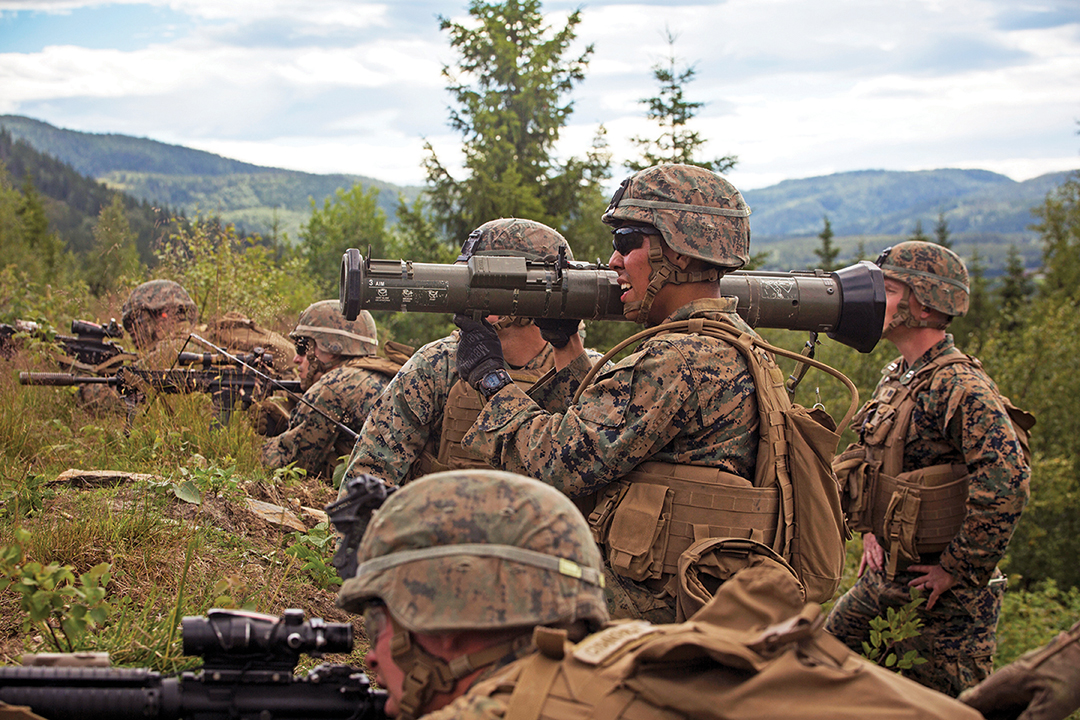
A month after Finland’s announcement, Swedish Minister of Defence Peter Hultqvist announced that his country would reintroduce military conscription for men and women in 2018 and boost defense spending by U.S. $55 million for the year.
NATO member Denmark in January 2017 said it, too, plans to increase military spending in response to Russian missile deployments in the Baltics.
Underground weapons cache
The U.S. Marines who arrived in Vaernes, Norway, are part of a newly created Marine Rotational Force-Europe. The unit, which served a six-month rotational deployment, is working with the Norwegian Ministry of Defence to improve the Marines’ ability to fight in extreme cold. Lt. Gen. John Wissler, then comander of the Marine Corps Forces Command, exhorted Marines to pass on what they learned from their cold-weather training, military.com reported. “As a Marine Corps, we’ve been very used to operating in sort of jungle and desert environments, but we’re not as good at operating in Arctic environments as we need to be,” he said in May 2017. “This company of Marines, and those Marines that accompanied you in your training, are capable of engaging and locating, closing with and destroying by fire and maneuver any enemy that we would encounter in an Arctic environment.”
The allies use underground caves in Norway to preposition gear to speed deployments. U.S. Marines and Norwegian Soldiers store battle tanks, artillery and logistics equipment in the caves. “We have prepositioned gear, both in caves and on ships, and it allows forces from the United States to come on out and fall in on gear that is already forward-deployed versus bringing all that gear with us,” said Col. William Bentley, then operations officer for the 2nd Marine Expeditionary Brigade, according to a report on the U.S. Marine Corps website.
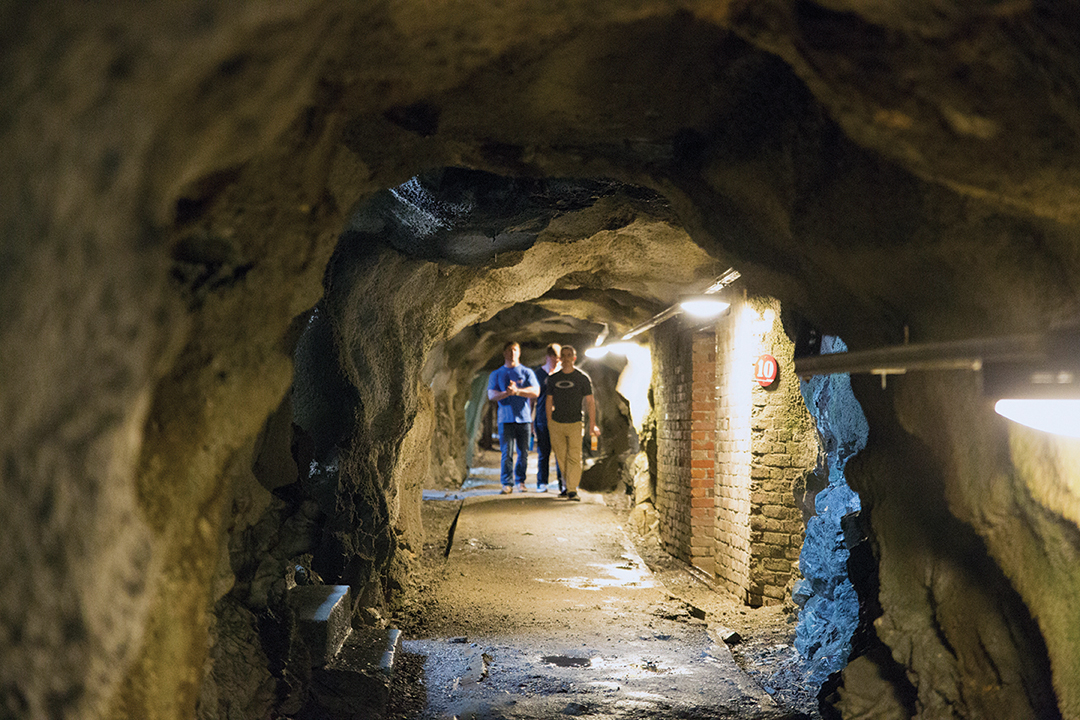
The gear has supported missions all over the world, including the 2003 invasion of Iraq, the ongoing fight against the Islamic State in Iraq and Syria and delivery of humanitarian assistance to Turkey after the 2011 earthquakes.
Taking stock of sea defenses
While the underground caves support ground operations, NATO has taken a harder look at its maritime defenses, too, as Russia upgrades its Northern Fleet off Norway’s coast. “Russia is expanding its undersea operations as part of a broader strategy of coercion aimed at its neighbors, the North Atlantic Treaty Organization and the United States,” said a July 2016 report from authors Kathleen Hicks, Andrew Metrick, Lisa Sawyer Samp and Kathleen Weinberger at the Center for Strategic and International Studies (CSIS), a Washington, D.C.-based think tank.
The report, titled “Undersea Warfare in Northern Europe,” cited a number of Russian provocations, including probable territorial violations of Swedish and Finnish waters by Russian submarines and Russian submarine activity near the United Kingdom’s submarine base at Faslane, Scotland.
It also pointed out a highly publicized 2014 incident when the Swedish Navy spent a week searching the Stockholm archipelago with helicopters and minesweepers after what was believed to be the spotting of a Russian submarine in Swedish waters. After a similar sighting, the Finnish Navy dropped depth charges into the water to warn off intruders in April 2015.
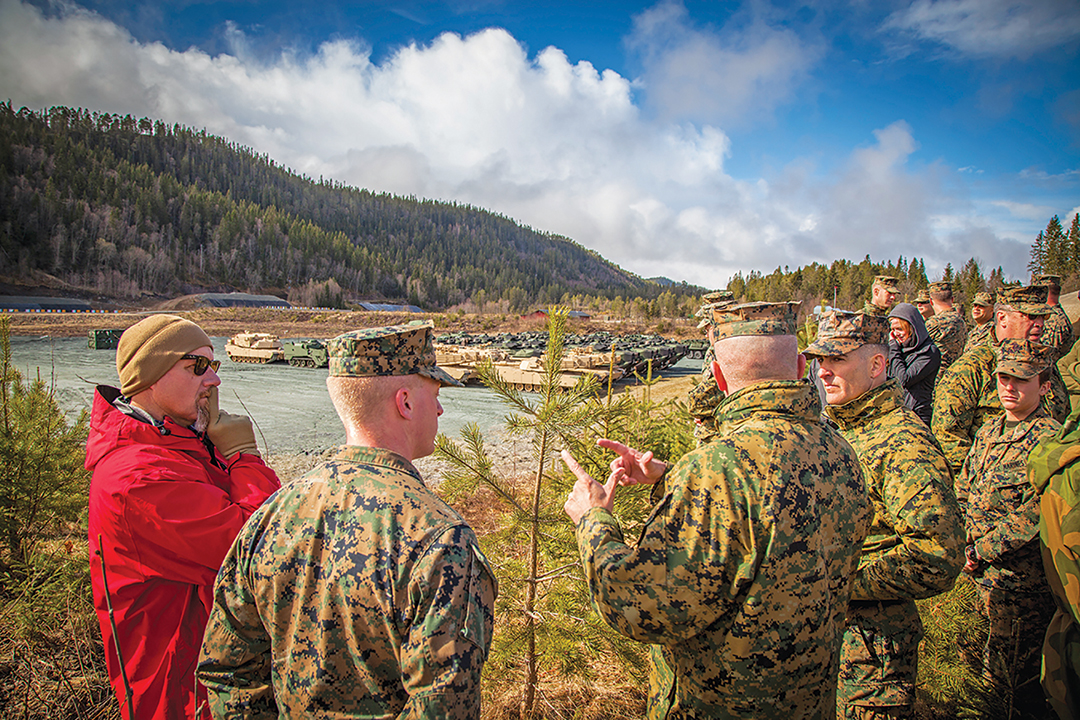
While Norway and U.S. ground forces continue to collaborate, the allies should also build organizational structures through the NATO-Nordic Defense Cooperation to establish an anti-submarine warfare center of excellence in the region, the CSIS report said. It also recommended that NATO reopen the Keflavik Naval Air Station in Iceland and that Norway reactivate its Olavsvern submarine support facility.
The Olavsvern base is “ideal for supporting submarine operations in the extreme North Atlantic and Arctic seas,” the report said. It is strategically located at the confluence of the Barents Sea and the extreme North Atlantic. During the Cold War, NATO submarines used it as a resupply hub. The base was closed in 2009. If Norway reopens a portion of the facility, it could support a rotational presence of British, French, Norwegian and U.S. submarines, the report said.
Filling the gaps
Norway has no current conflict with Russia. The countries cooperate on coast guard operations, search-and-rescue operations and on guarding their mutual border.
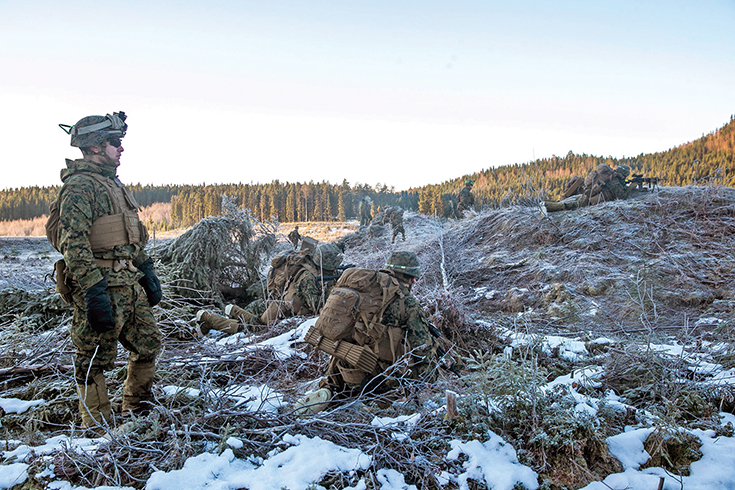
Norway and its neighbors have watched, however, as Russia developed a sophisticated submarine fleet and tested high-precision, long-range missiles in the North Atlantic. The need for readiness, Norwegian commanders say, is paramount.
“We are not in a conflict with Russia, and we have never had a border dispute with them in 1,000 years, but after Ukraine we changed our posture,” Lt. Gen. Rune Jakobsen, commander of the Norwegian Joint Headquarters, told The Guardian newspaper. “They are developing new capabilities, especially submarines, very fast. If we leave a vacuum, they will fill it.”

